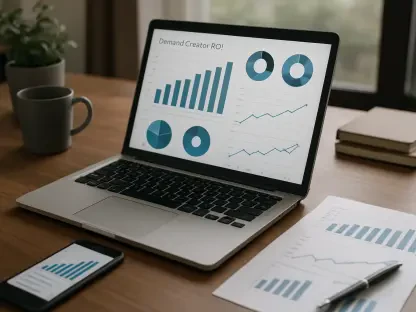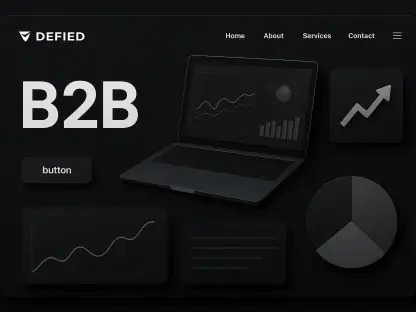In the fast-paced digital landscape of 2025, imagine a scenario where nearly half of all affiliate fraud goes undetected, silently draining marketing budgets and tarnishing brand reputations. Statistics reveal a staggering reality: 45% of affiliate fraud today is tied to cloaking, a deceptive tactic that hides violations from brands and platforms alike. This guide aims to empower brands with the knowledge and tools to uncover these hidden threats and reclaim control over their affiliate programs. By following actionable steps, companies can protect their ad spend and ensure compliance in an era of increasingly sophisticated fraud.
The purpose of this guide is to demystify affiliate cloaking and provide a clear path to combat its impact. With fraudulent affiliate traffic affecting up to 25% of campaigns, understanding and addressing cloaking is no longer optional—it’s a necessity for safeguarding revenue and trust. This resource offers a detailed roadmap to detect and prevent these violations, ensuring brands can thrive without falling victim to unseen manipulations.
The importance of tackling cloaking cannot be overstated. As fraudsters leverage advanced technologies like AI to evade detection, traditional monitoring falls short. Brands that fail to adapt risk not only financial losses but also long-term damage to customer loyalty and platform compliance. This guide serves as a critical tool to stay ahead of these challenges, equipping marketers with practical strategies to expose and neutralize cloaking threats.
Unveiling the Threat: Why Affiliate Cloaking Matters
Affiliate fraud has emerged as a pressing concern for brands, with cloaking now accounting for 45% of fraudulent activities in affiliate marketing. This deceptive practice allows fraudsters to mask their violations, presenting compliant content to reviewers while redirecting users to harmful or misleading pages. The hidden nature of these tactics makes detection a significant challenge, often leaving brands unaware of the extent of their losses.
The inability to see these violations poses a fundamental question: how can brands protect what they cannot identify? Cloaking undermines the integrity of affiliate programs by siphoning off budgets through unearned commissions and skewed conversions. Addressing this issue is vital to maintaining trust with consumers and ensuring marketing efforts yield genuine results.
This discussion will delve into the mechanics of cloaking, exploring its tactics and the devastating impact on brand equity. By shedding light on modern detection tools and strategies, the focus remains on empowering brands to uncover these silent threats. Protecting budgets and reputations starts with understanding the enemy—and cloaking is a formidable one in today’s digital ecosystem.
The Rising Tide of Affiliate Fraud: A Statistical Perspective
The scale of affiliate fraud is alarming, with industry data indicating that up to 25% of affiliate traffic is fraudulent. Cloaking, in particular, has become the dominant method, constituting 45% of fraud cases as of 2025. This sharp rise highlights the urgency for brands to prioritize countermeasures against such deceptive practices.
Geographic trends further underscore the global nature of this problem. Reports show cloaking is especially prevalent in regions like China, where 60% of affiliate fraud involves these tactics, followed by Russia and CIS at 50%, the U.S. at 40%, and Europe at 35%. These figures demonstrate that no market is immune, pushing brands worldwide to adopt robust protective strategies.
The statistical evidence serves as a wake-up call for companies relying on affiliate marketing. As fraud evolves, so must the tools and awareness to combat it. Ignoring these numbers risks significant financial and reputational losses, making it imperative for brands to invest in understanding cloaking and implementing defenses in their 2025 marketing plans.
Decoding Affiliate Cloaking: Tactics and Impact on Brands
Step 1: Understanding Legitimate vs. Malicious Cloaking
Affiliate cloaking refers to the practice of disguising the true content or destination of a link to bypass scrutiny during ad reviews. While this technique can serve benign purposes, it often veers into malicious territory when used to deceive platforms and users. Distinguishing between these two applications is crucial for brands aiming to maintain program integrity.
Legitimate Use: Enhancing Aesthetics and Security
Legitimate cloaking focuses on improving user experience by masking complex URLs with branded, shorter links. For instance, transforming a lengthy tracking URL into a clean “brand.com/offer” not only looks professional but also shields affiliate IDs from theft. This practice supports transparency without compromising brand interests.
Malicious Intent: Deceiving Platforms and Users
Conversely, malicious cloaking involves showing compliant content to reviewers while redirecting actual users to banned or misleading pages. Such tactics exploit the review process, allowing affiliates to promote unapproved offers under the radar. Without specialized tools, these violations can persist undetected for extended periods.
Step 2: Real-World Example of Branded Traffic Hijacking
Consider a scenario where a brand launches a high-profile campaign, only for an affiliate to secretly insert cloaked links into the user journey. Users clicking on ads expect to reach the official site, but hidden redirects credit the affiliate for conversions they did not earn. This manipulation erodes the value of branded efforts.
What Reviewers See vs. User Experience
During audits, reviewers observe a seamless path to the brand’s landing page, with no apparent issues. However, real users encounter a subtle redirect that tags an affiliate ID before reaching the destination. This discrepancy happens in milliseconds, leaving users oblivious to the interference.
Financial Loss from Stolen Conversions
The financial toll of such hijacking is substantial, as brands pay commissions for traffic they would have secured organically or through paid channels. These unnecessary costs drain budgets, diverting resources from genuine marketing initiatives. Detecting these hidden redirects is essential to prevent ongoing losses.
Step 3: Content Cloaking and Its Risks
Content cloaking is another prevalent form of fraud, where affiliates display neutral content to auditors but redirect users to unapproved or questionable offers. This bait-and-switch tactic misleads both platforms and consumers, creating significant risks for brands associated with such campaigns.
Auditor View vs. User Redirection
Auditors and bots typically see a safe, policy-compliant page, such as a generic product review. In contrast, users are swiftly redirected to sites promoting dubious deals or harmful content, unaware of the switch. This deception bypasses standard moderation processes with alarming ease.
Compliance and Reputation Damage
The consequences of content cloaking extend beyond immediate losses, as brands risk platform penalties like ad account suspensions for policy violations. Additionally, association with shady content damages consumer trust, potentially leading to long-term reputational harm. Proactive measures are vital to mitigate these threats.
Step 4: Modern Cloaking Techniques in 2025
As of 2025, cloaking tactics have become increasingly sophisticated, leveraging cutting-edge technology to evade detection. Fraudsters employ AI-driven automation and precise targeting methods to differentiate between auditors and users, ensuring their violations remain hidden from standard checks.
AI-Powered Evasion Tactics
Advanced algorithms now enable fraudsters to identify reviewer bots through IP addresses, geolocation, and device fingerprints. By serving tailored content—clean pages to bots and misleading ones to users—these tactics outsmart traditional monitoring systems. Staying ahead requires equally advanced countermeasures.
Silent Threats: Brand Hijacking and Attribution Theft
Specific dangers include PPC brand hijacking, where affiliates mimic official ads to divert traffic, and fake coupon redirects that exploit consumer trust. Last-click attribution theft also remains a concern, as affiliates claim credit for sales through hidden interventions, inflating costs for brands.
Key Strategies to Detect and Prevent Affiliate Cloaking
Combating affiliate cloaking requires a proactive, multi-faceted approach that goes beyond standard analytics. The following actionable strategies provide brands with the means to uncover hidden violations and protect their marketing investments. Implementing these methods can significantly reduce the impact of fraud.
Behavioral Simulation: Mimic authentic user interactions to bypass cloaker detection mechanisms. By simulating real clicks and organic behavior, brands can reveal content hidden from auditors. Tools that automate this process ensure consistent monitoring without tipping off fraudsters.
Geographic Rotation and Proxy Testing: Test content across various regions using rotating proxies to detect geotargeted fraud. Cloaked content often varies by location, so checking from multiple vantage points exposes discrepancies. This method uncovers what might appear compliant in a single region.
Evidence Collection: Gather concrete proof of violations, such as affiliate IDs, screenshots of redirected pages, and full redirect chains. This documentation is crucial for disputing fraudulent commissions and enforcing program policies. Automated systems can streamline this process for efficiency.
Quick Action with Alerts: Respond immediately to detected violations through real-time notifications. Swift alerts via preferred communication channels enable brands to address issues before significant damage occurs. Timely intervention minimizes financial and reputational losses.
A comprehensive tool like Bluepear integrates these strategies into a single platform, offering robust cloaking detection capabilities. For instance, Rhino Affiliates utilized Bluepear to identify over 100 violations, ultimately saving €131,000 by disputing fraudulent commissions. Such tools are indispensable for modern fraud prevention.
Broader Implications: Affiliate Fraud in the Digital Landscape
Affiliate cloaking is not an isolated issue but part of a larger wave of digital fraud impacting brands in 2025. Standard ad platforms, such as Google Ads, often lack the depth to detect advanced tactics, relying on surface-level metrics that fraudsters manipulate to appear legitimate. This gap leaves brands vulnerable to unseen threats.
The long-term damages of unchecked cloaking are extensive, including wasted ad spend on hijacked conversions and skewed analytics that distort campaign performance. Beyond financial losses, reputation suffers when users encounter shady offers tied to a brand’s name, while compliance risks threaten account suspensions and legal scrutiny.
Looking ahead, the sophistication of AI-driven fraud is set to increase, posing new challenges for detection. Brands must adopt specialized solutions like Bluepear to stay competitive against evolving tactics. Investing in such tools ensures resilience against future threats, preserving both budgets and trust in the digital ecosystem.
Take Control: Start Combating Cloaking Now
Reflecting on the journey through understanding and addressing affiliate cloaking, it became evident that the 45% fraud rate tied to these tactics demanded urgent action. Brands that followed the outlined strategies—behavioral simulation, geographic testing, evidence collection, and rapid alerts—gained a powerful edge in protecting their affiliate programs. Tools like Bluepear proved instrumental, as seen in real-world successes such as Rhino Affiliates’ €131,000 savings.
Moving forward, integrating automated monitoring and simulation-based detection into marketing frameworks emerged as a non-negotiable step. The battle against cloaking required continuous vigilance, with an emphasis on adopting cutting-edge solutions to uncover hidden violations. Brands were encouraged to explore Bluepear’s 7-day free trial, a practical starting point to safeguard budgets and restore program integrity.
As the digital landscape continued to evolve, staying proactive offered the best defense against fraud. Exploring partnerships with advanced detection platforms and refining internal policies helped build a stronger foundation. These actions ensured that brands not only countered current threats but also prepared for the complexities of tomorrow’s challenges.









